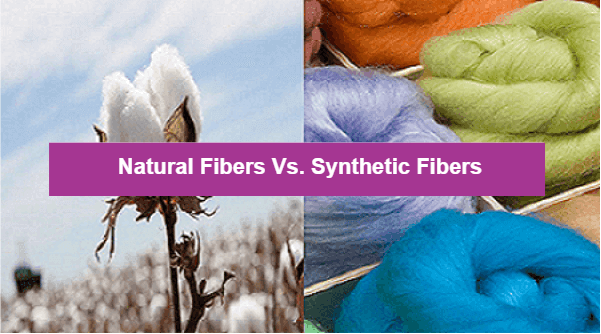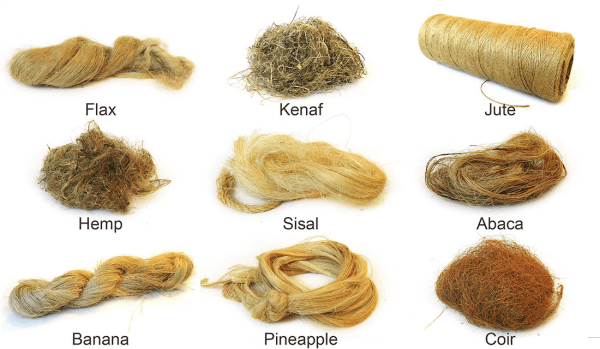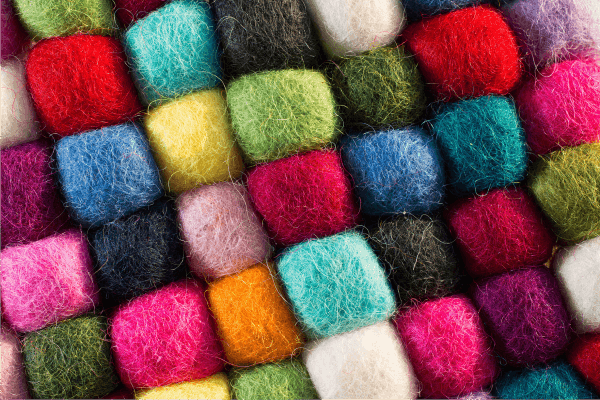Difference between Natural and Synthetic FibersNatural and synthetic fibers are used in the textile industry to create various clothing and fabric products. While natural fibers are derived from natural sources, such as plants and animals, synthetic fibers are created through chemical processes in a laboratory. Natural and synthetic fibers are the two primary materials used to make textiles. While both are commonly used in clothing manufacturing, they differ in many ways. 
What are Natural Fibers?Natural fibers are derived from plant, animal, and mineral sources and have been used for clothing, textiles, and other purposes for thousands of years. These fibers are highly valued for their durability, breathability, and versatility and are a popular choice for sustainable and eco-friendly materials. Plant-based natural fibers include cotton, linen, hemp, jute, and bamboo. Cotton is the most highly used natural fiber, prized for its softness and breathability. Linen, made from the flax plant, is also highly sought after for its coolness and durability. Hemp and jute are two fibers that are gaining popularity due to their strength and eco-friendliness, and bamboo is known for its softness and antibacterial properties. Wool, which is an animal-based natural fiber, is typically derived from the coats of sheep and other animals and is highly valued for its warmth and insulating properties. Silk, made from the cocoons of silkworms, is known for its softness and luxurious feel, while cashmere, taken from the underbelly of goats, is prized for its softness and warmth. Finally, mineral-based natural fibers include asbestos and fiberglass. Although once popular for its fire-resistant properties, asbestos is banned in many countries due to its carcinogenic properties. Fiberglass, on the other hand, is a popular choice for insulation and other applications due to its strength and heat resistance. Overall, natural fibers offer a range of benefits that make them a popular choice for clothing, textiles, and other products. Whether derived from plant, animal, or mineral sources, these fibers offer a unique combination of durability, breathability, and sustainability that synthetic materials cannot match. Natural fibers are an excellent choice for eco-friendly and sustainable options. Natural fibers also have a positive impact on local economies. Many natural fibers, such as cotton and silk, are produced in developing countries, providing employment opportunities for local communities. This helps to support sustainable economic growth and improve the livelihoods of those involved in the production process. However, natural fibers have their drawbacks. One of the biggest challenges is ensuring the production process is sustainable and does not harm the environment or local communities. For example, the production of cotton can be water-intensive. It may require harmful pesticides, which can negatively impact the environment and the health of those involved in the production process. Additionally, animal-based natural fibers, such as wool and silk, may involve animal products and raise ethical concerns about the treatment of animals. However, ethical and sustainable alternatives, such as organic wool and silk, prioritize animal welfare and sustainable production practices. 
Uses of Natural Fibers
One of the most common uses of natural fibers is in the production of clothing and textile. These fibers are prized for their durability, breathability, and natural feel.
Natural fibers are also used in the construction industry to create various materials, including insulation, roofing, and flooring. Natural fibers such as bamboo, straw, and jute are commonly used to create insulation materials that are both effective and sustainable. These materials offer excellent insulation properties while also being renewable and biodegradable.
Natural fibers are also used in furniture production, particularly in creating upholstery and cushions. Natural fibers such as wool, cotton, and hemp offer a natural feel and are more sustainable than synthetic materials. They are also breathable and can help regulate temperature, making them ideal for use in furniture.
Natural fibers are also used to produce sports equipment, particularly in creating balls and padding. Natural fibers such as cork, hemp, and coconut fiber are commonly used to create padding materials that are both effective and sustainable. These materials offer excellent shock absorption properties while also being renewable and biodegradable.
Natural fibers are also used to produce paper, particularly in creating specialty papers such as fine art and currency paper. Natural fibers, such as cotton and linen, offer excellent strength and durability, making them ideal for high-quality paper production.
Natural fibers are also used in various medical applications, particularly in creating wound dressings and surgical gowns. Natural fibers such as cotton and silk are prized for their natural feel and breathability, making them ideal for use in medical textiles.
Natural fibers are also used in a range of crafts and hobbies, including knitting, crocheting, and weaving. Natural fibers such as wool, cotton, and linen offer a natural feel and are prized for their softness and durability. Top 5 Countries that Produce Natural Fibers
What are Synthetic Fibers?Synthetic fibers are human-made fibers that are produced through various chemical processes. Unlike natural fibers from plants, animals, or minerals, synthetic fibers are created by combining chemicals such as polymers, petroleum, and coal. The most commonly used synthetic fibers include nylon, polyester, acrylic, and rayon. Advantages of Synthetic FibersOne of the most significant advantages of synthetic fibers is their durability. Unlike natural fibers, synthetic fibers are not affected by moisture, sunlight, or insects, making them ideal for outdoor use. They are also less likely to shrink, wrinkle, or fade over time, which makes them easy to care for and maintain. Additionally, synthetic fibers are lightweight and breathable, making them suitable for sportswear and other performance-oriented clothing. Another advantage of synthetic fibers is their versatility. They can be produced in various colors, patterns, and textures, making them popular among fashion designers and interior decorators. They can also be blended with natural fibers to create fabrics with unique properties. For example, polyester can be blended with cotton to create a soft, comfortable, and durable fabric. Disadvantages of Synthetic FibersDespite their many advantages, synthetic fibers also have some disadvantages. One of the most significant disadvantages is their environmental impact. Synthetic fibers are made from non-renewable resources and are not biodegradable. When discarded, they can take hundreds of years to decompose, contributing to the accumulation of waste in landfills. Synthetic fibers are also known for their poor breathability. Unlike natural fibers, which can absorb and release moisture, synthetic fibers tend to trap moisture, leading to discomfort and odor. This can be especially problematic in clothing and bedding. In addition, synthetic fibers are often treated with chemicals to improve their properties or appearance. These chemicals can be harmful to human health and the environment. For example, some flame retardants used in synthetic fabrics have been linked to cancer and other health problems. 
Uses of Synthetic Fibers
Synthetic fibers are widely used in the textile industry for their durability and low cost. They are used to make different types of clothing, including sportswear, swimwear, and outerwear. Nylon and polyester are popular fibers for making sports clothing because of their moisture-wicking properties, durability, and ease of care. Polyester is also popular for casual clothing because it is lightweight, wrinkle-resistant, and easy to dye.
Synthetic fibers are also used in the home furnishing industry to create curtains, upholstery, and carpets. Nylon and polyester are common fibers used for making carpets due to their stain resistance, durability, and affordability.
Synthetic fibers are also used in the medical field for various applications. For example, polyester and nylon are used to create sutures because they are strong and do not cause an adverse reaction in the body. Synthetic fibers also help make medical implants like artificial joints, heart valves, and vascular grafts. These implants are made from materials like polyurethane, which is a synthetic polymer.
Synthetic fibers are used in the automotive industry for various applications. For example, polyester fibers help make seat covers because they are durable and easy to clean. Nylon is used to make airbags because it is strong and can withstand the pressure of inflation. Synthetic fibers are also used in the production of tires because they provide better traction and durability.
Synthetic fibers are used in the packaging industry to create materials like plastic bags, shrink wrap, and bubble wrap. Polyester and nylon are used to make these products because they are strong and can withstand the rigors of shipping and handling. Synthetic fibers also help create packaging materials for food products like chips and snacks.
Synthetic fibers are used to create sports equipment like tennis racquets, skis, and snowboards. Carbon fiber is used to make tennis racquets because it is lightweight and provides better control. Nylon is used to make ski boots because it is durable and waterproof. Synthetic fibers also help produce athletic shoes because they provide cushioning and support. Top 5 Countries that Produce Synthetic Fibers
Difference between Natural Fibers and Synthetic Fibers
ConclusionIn conclusion, natural and synthetic fibers both have their own unique properties and uses, and they can be combined to create a wide range of fabrics and textiles. While both types of fibers have their own advantages and disadvantages, they can both be used in a sustainable and responsible manner to create products that meet our needs while minimizing their impact on the environment. When it comes to choosing between natural and synthetic fibers, it's important to consider the intended use of the product, as well as the environmental impact of each type of fiber.
Next TopicDifference between
|
 For Videos Join Our Youtube Channel: Join Now
For Videos Join Our Youtube Channel: Join Now
Feedback
- Send your Feedback to [email protected]
Help Others, Please Share










